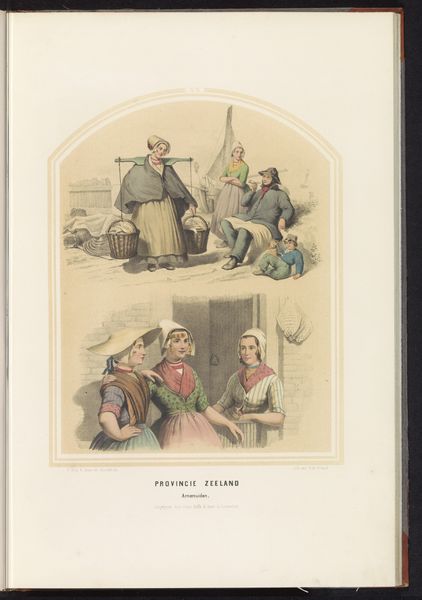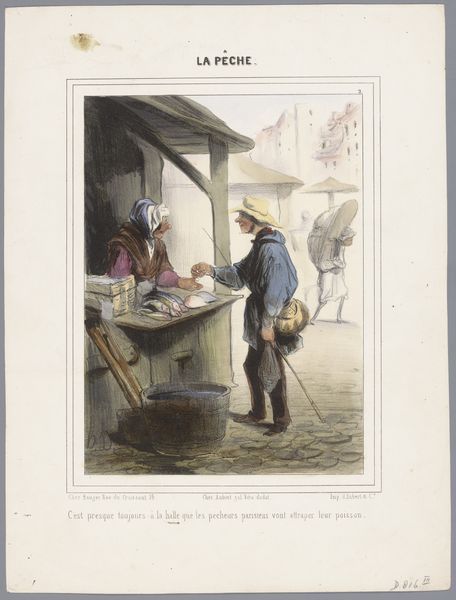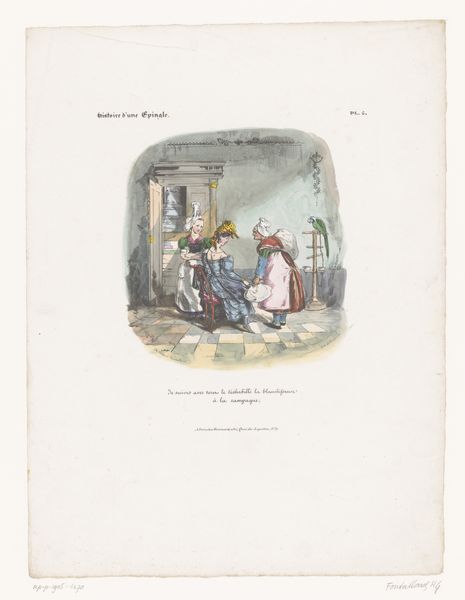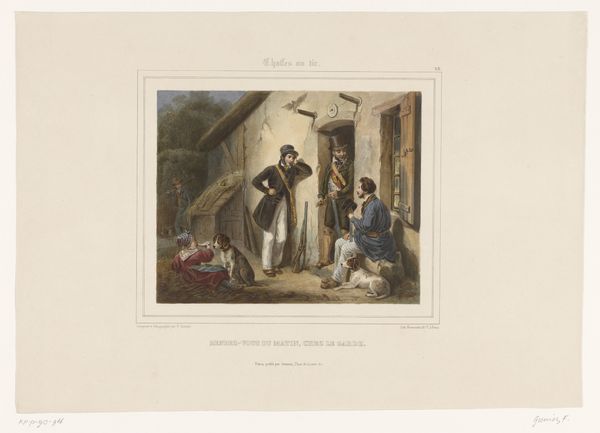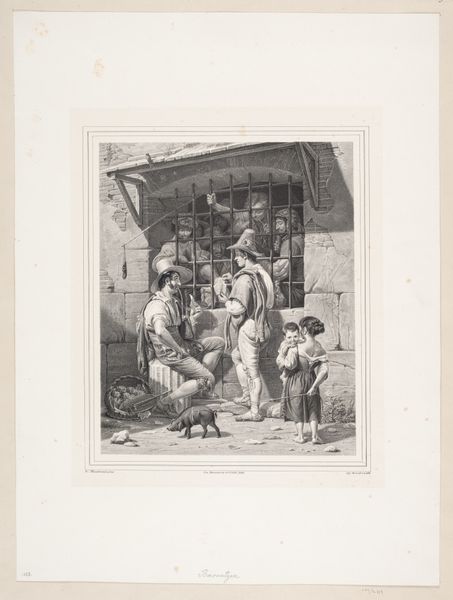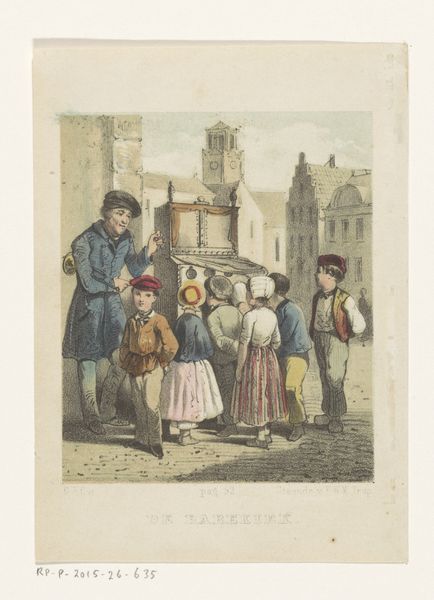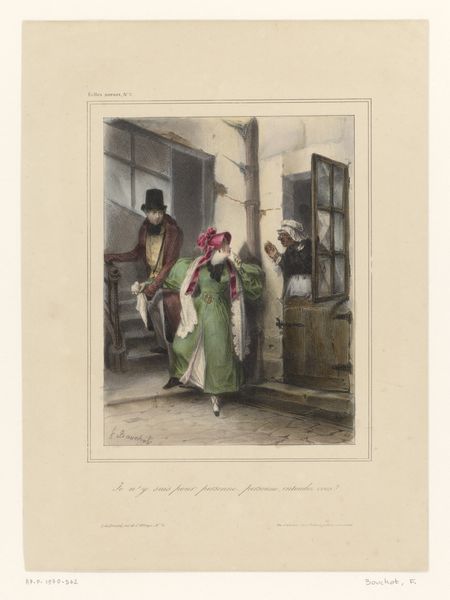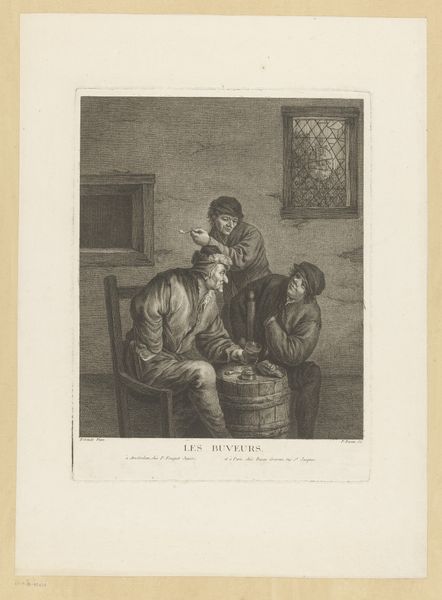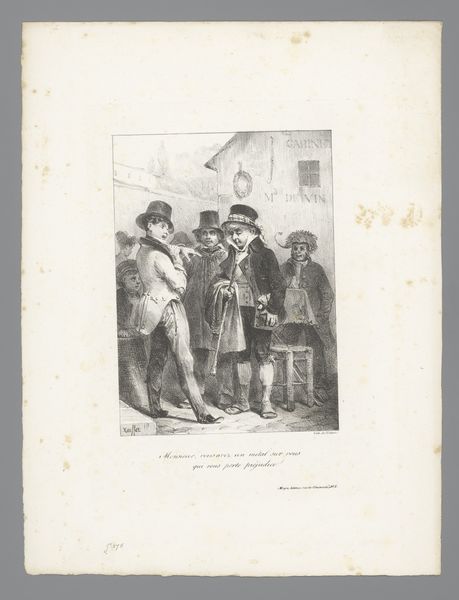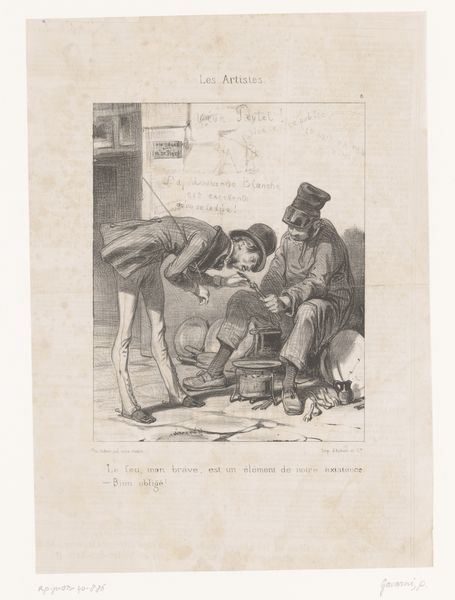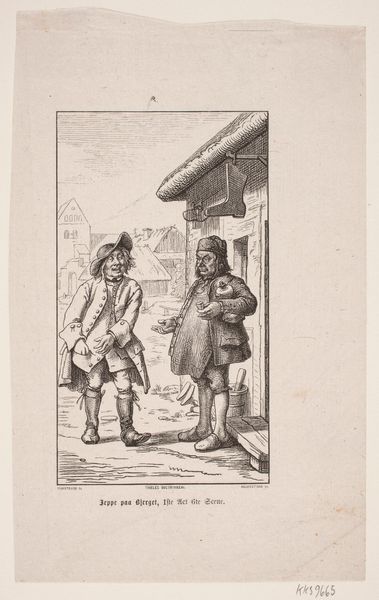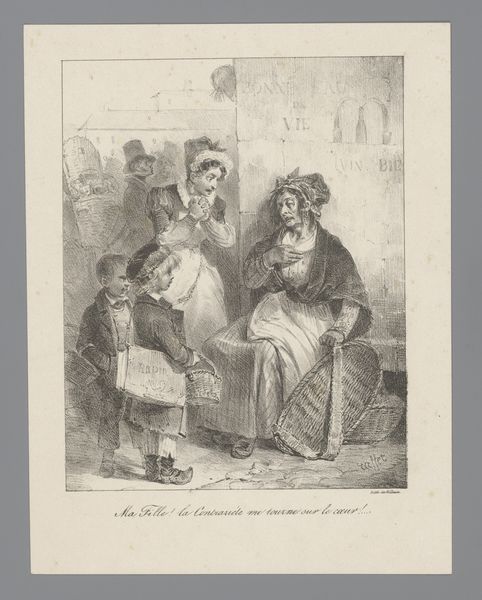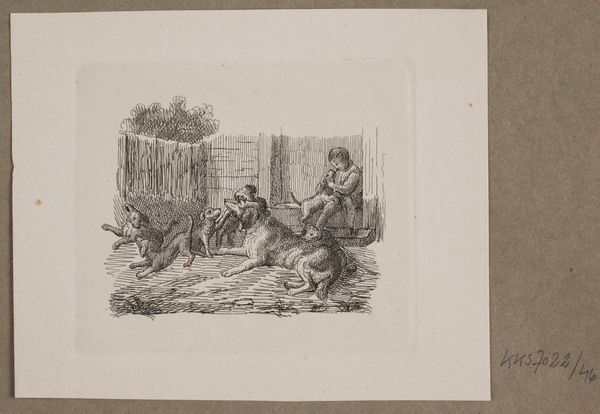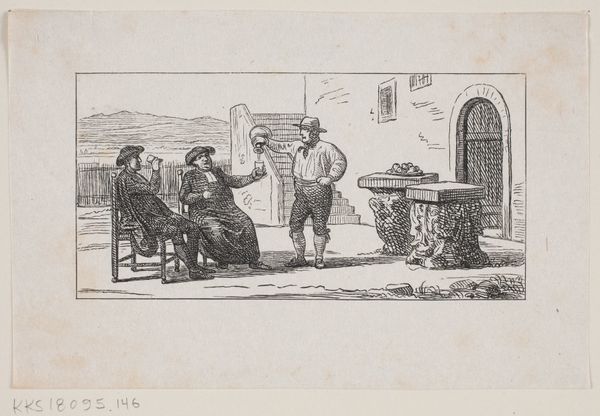
lithograph, print, oil-paint
#
narrative-art
#
lithograph
# print
#
oil-paint
#
landscape
#
romanticism
#
genre-painting
#
watercolor
Dimensions: height 288 mm, width 220 mm
Copyright: Rijks Museum: Open Domain
Editor: This is "Man comes from the market with a full shopping basket and goose" made between 1837 and 1843 by Charles Vogt. It looks like a print, maybe a lithograph. There's a distinct sense of everyday life. What catches your eye in this piece? Curator: I'm drawn to how Vogt uses the lithographic process. Consider the socio-economic implications: Printmaking democratized art. This wasn’t a unique oil painting for the wealthy, but a mass-produced image potentially available to a wider audience. How does the print medium influence our perception of this domestic scene? Editor: That's an interesting point! I was initially focused on the picturesque qualities - the market scene and the figures. But you're right, it's also about the reproduction of this image. Curator: Exactly. Look at the materiality of the lithograph itself: the paper, the inks, the methods of applying tone through various crayon techniques. What labor went into its creation, both artistic and industrial? The commercial aspect of Vogt’s work is something to consider. These images often circulated as advertisements. Editor: So, it's not just about portraying an everyday scene, but also about the everyday consumption and commercial life it hints at. Does the "goose," in particular, seem to embody this emphasis on material consumption and production? Curator: Precisely. The goose, held in hand, shifts from being a simple part of a "genre" scene to a product, a commodity. Also the market place itself embodies commodification as part of a narrative of a happy life. Does the image reflect societal expectations? Does the making of it also comment on the work done by women as they are situated near the market and house? Editor: I hadn’t thought of it that way, viewing it more as a charming domestic scene. Seeing it in terms of production and accessibility shifts my perspective quite a bit. Thanks, it’s definitely given me a new lens through which to see this piece. Curator: Likewise! It's important to look at how artistic processes impact the narrative and challenge traditional interpretations.
Comments
No comments
Be the first to comment and join the conversation on the ultimate creative platform.
